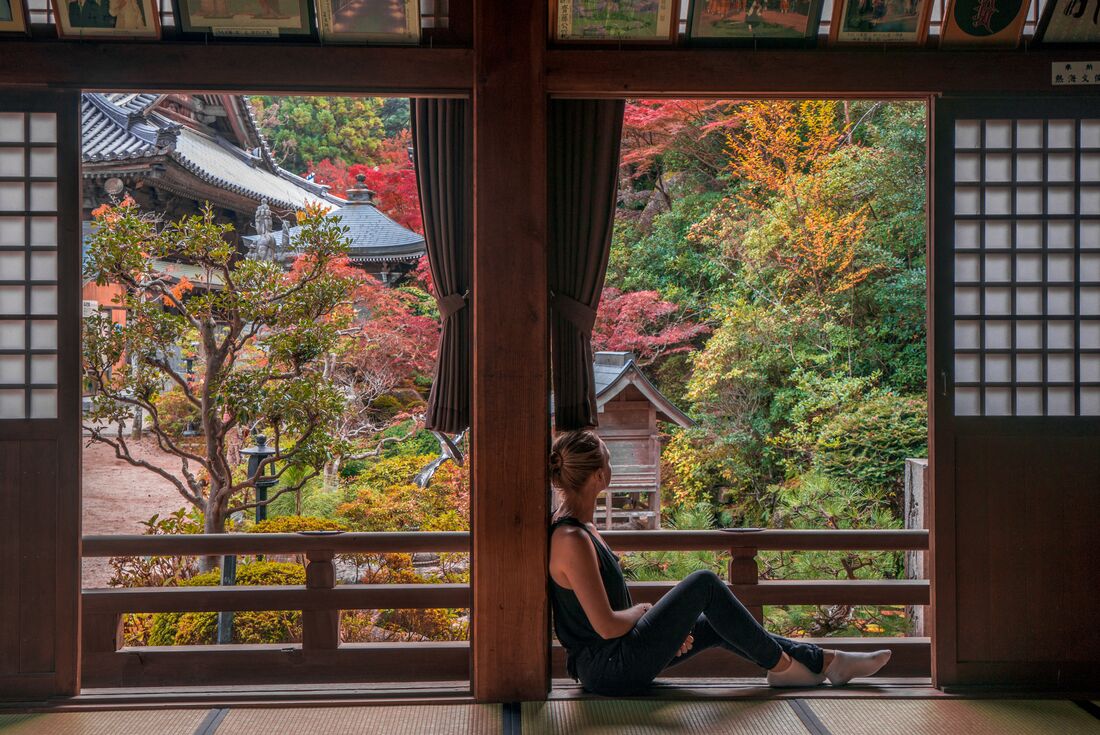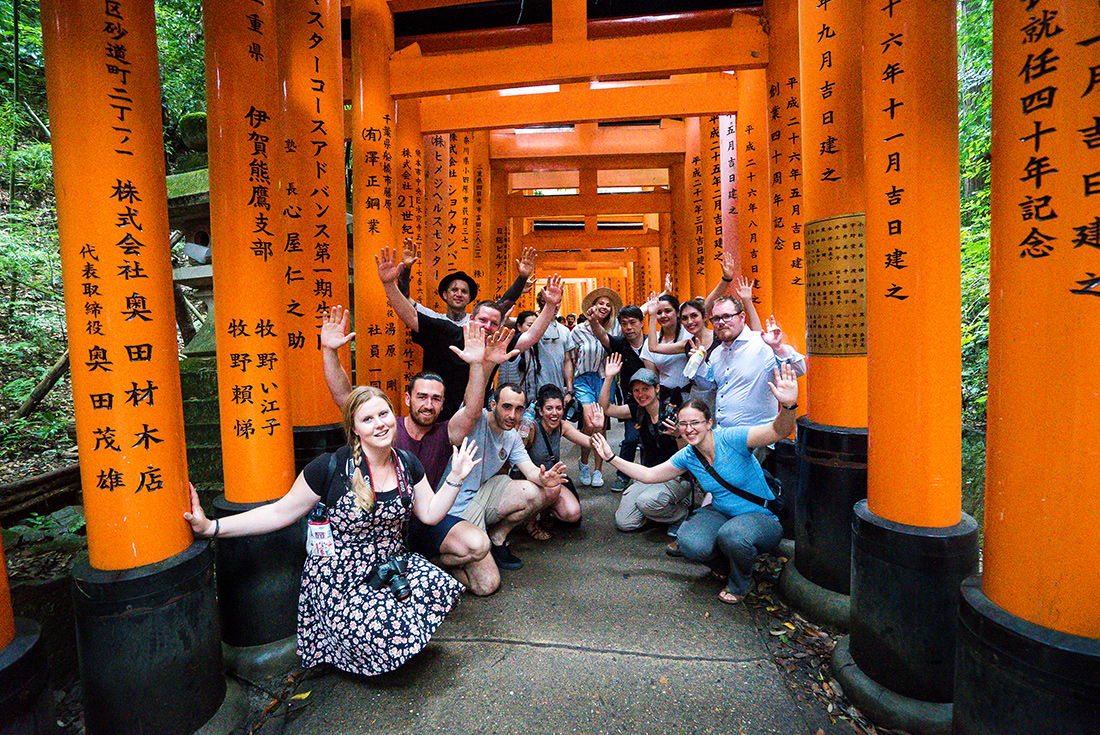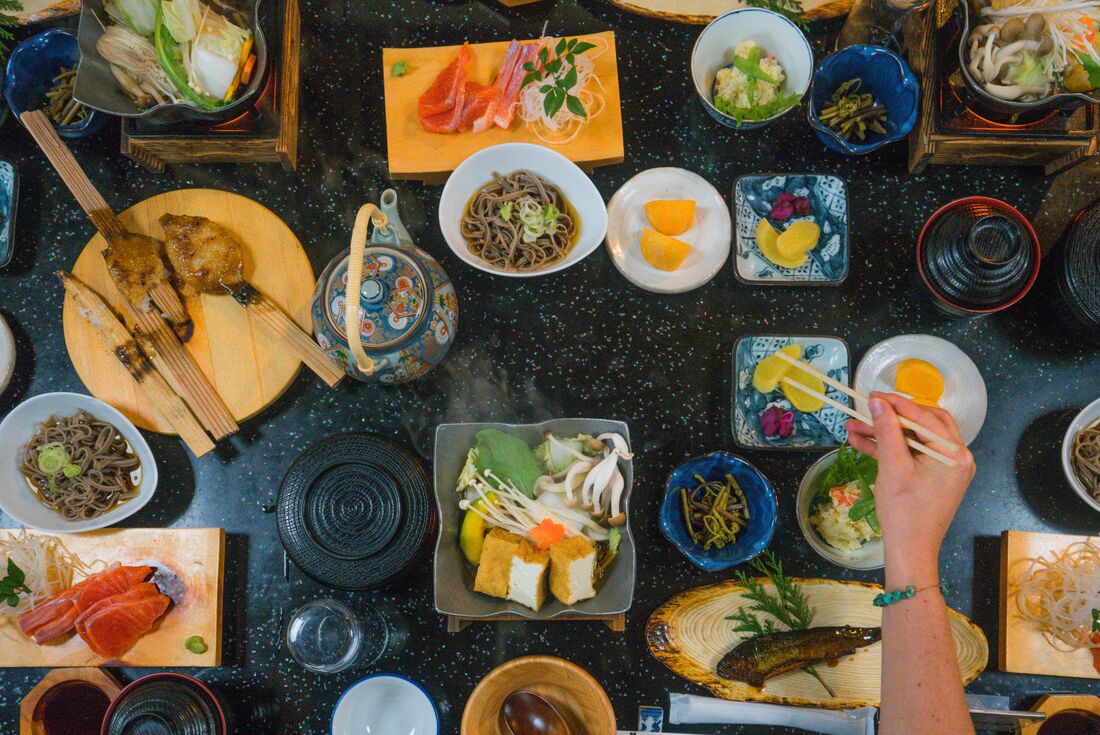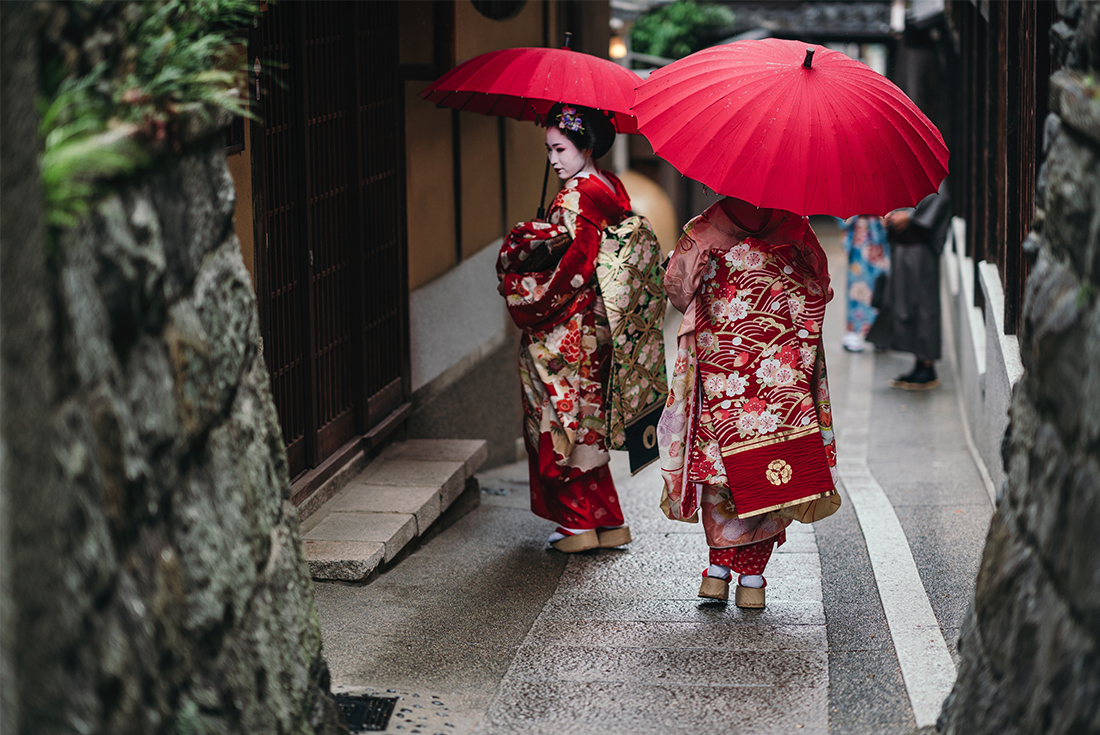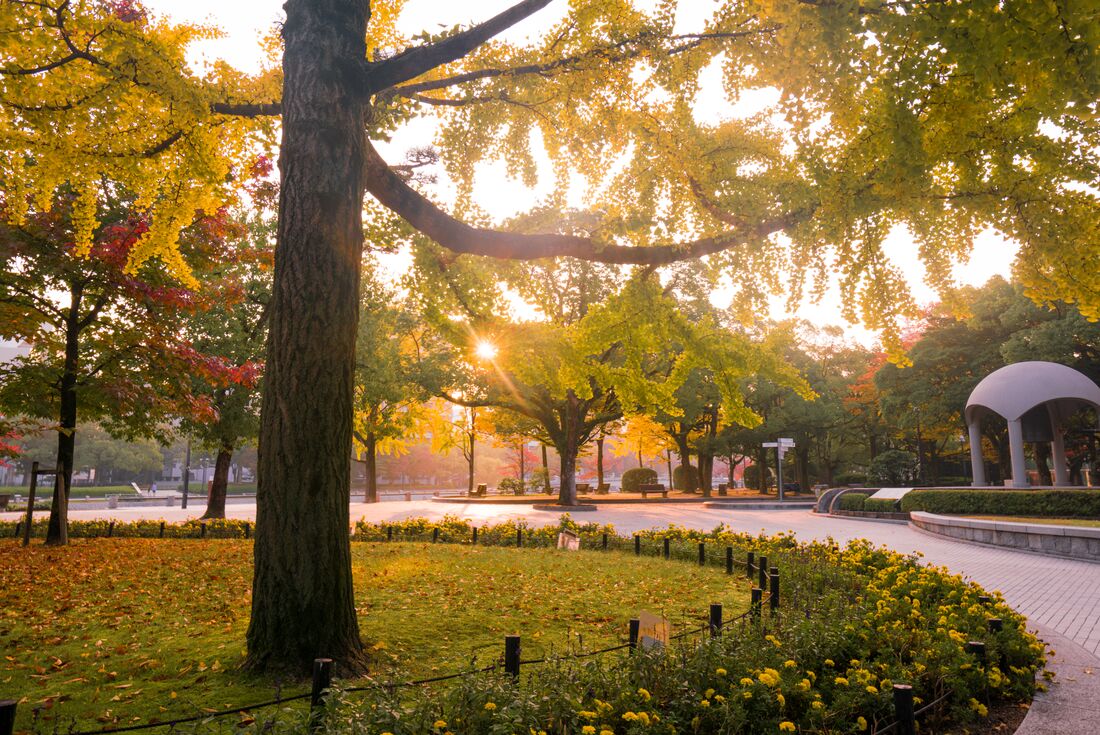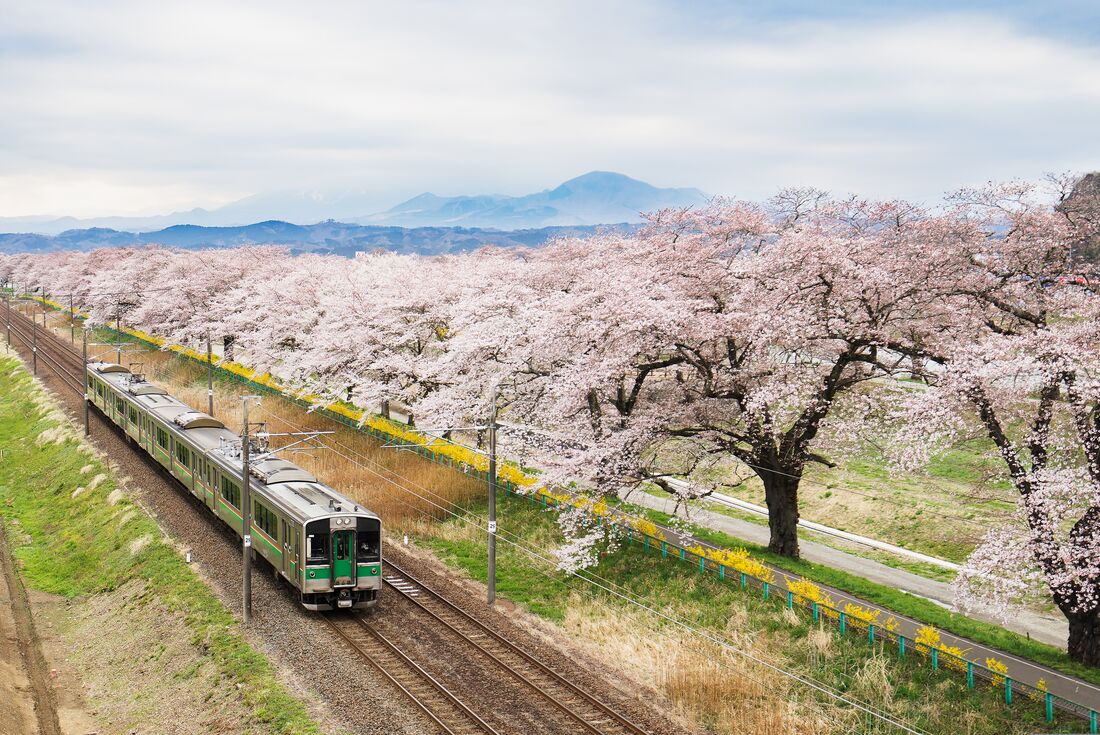- Soar high above Lake Ashi and (on a clear day) get a glimpse of glorious Mt Fuji on a ride on the Hakone ropeway.
- Be impressed by the efficiency and ultra modernity of Japan’s bullet trains as you zip from place to place.
- Explore traditional Japanese culture in Edo-period Takayama and visit a folk village, tour a 600-year-old market and a enjoy a sake brewery tasting.
- Visit the Peace Park for moving insight into the devastation of the atomic bomb in Hiroshima, then cruise to peaceful Miyajima Island where wild deer roam the streets.
- Finish your tour with three nights in Kyoto, Japan’s cultural capital and home to literally thousands of temples, the Gion District where Geisha entertain the wealthy elite and renowned Kyoto sushi.
07 Feb 2024
Japan: Land of the Rising Sun
CJST
Validity: 01 Jan 2024 to 31 Dec 2024
This 13-day tour of Japan will introduce you to the cultures – old and new – that define this small but influential archipelago. Beginning in tech-mecca Tokyo and finishing with three nights in Kyoto, this immersive tour will also introduce you to lesser-known cities through Japan’s centre and southern reaches. Discover scenic beauty on the Hakone ropeway, sip the best sake in Takayama, find out about the Hiroshima of today and wonder at the floating torii gate of Miyajima. You’ll have a local to guide you through these lesser-known destinations and reveal layers of culture and history.
Original
Explorer
Boat,Public Bus,Cable Car,Ferry,Metro,Bullet Train,Train
3
You will be expected to carry your own luggage, including while moving about busy public transport hubs to make tight connections, up stairs and escalators and on and off buses and trains. Although you won't be required to walk long distances with your luggage, you are expected to be able to walk and handle your own luggage for up to 30 minutes, sometimes at a fast pace and in crowds. Good general fitness and mobility will play a big part in making your trip more enjoyable. Japanese cities are best explored by foot and public transport, so be prepared for a lot of walking each day you are in a destination! Many travellers are surprised how much distance they end up covering each day just seeing the sights. Bring comfortable walking shoes and be prepared to spend most of the day on your feet.
The B Asakusa
3-16-12 Nishi Asakusa, Taito-ku 東京都台東区西浅草3-16-12
Taito-ku
Tokyo
111-0035
JAPAN
The B Asakusa is located in Tokyo's downtown Asakusa district and is located within 100m distance of several subway stations. The hotel provides immediate access to the historical sights of Asakusa and the Sumida River, as well as the main Tokyo hub of Ueno where Tokyo's main national museums are located. The traditional life of old Edo (the former name for Tokyo) can still be experienced in this part of Tokyo's central north-west.
Japan has a very efficient public transport service and there are many ways to get from the two airports in the Tokyo region (Narita Airport or Haneda Airport) to your hotel. Narita is located approx. 65 km from Tokyo and taxi fares are expensive given the distance (around JPY25,000). Haneda Airport is closer to central Tokyo and a taxi fare will cost around JPY6,000-10,000. Public Transport If you prefer to make your own way to the hotel from Narita, there are various connections either by express train or limousine bus to Tokyo Station or Ueno Station and then by local train, subway or taxi to the Agora Place Asakusa which is located in Asakusa near Ueno. The airport information desks can provide helpful advice too. The most direct way is by the Keisei Skyliner express to Keisei Ueno Station (approx. JPY2,500 and 40 mins) and then by subway or taxi. The Narita Express will take you into Tokyo Station (approx. JPY3,000 and 50 mins) and you will then need to change to the local Yamanote line, subway or taxi. If you're travelling from Haneda Airport, the most direct option is the Keikyu Line Airport Limited Express (approx. JPY700 and 45 mins) and then subway or taxi. Please check the transport details on the hotel's website: https://en.theb-hotels.com/theb/asakusa If you're having any problems finding the hotel, ring the hotel directly (you can use one of Japan's green public phones with coins of JPY10 or JPY100).
For trips departing on the following dates, use this joining point.
18 Apr 2024 (CJST2404182)
Ryogoku View Hotel
2-19-1 Ryogoku Sumida-ku 130-0026 Tokyo-to Japan
Tokyo
JAPAN
Phone: +81 3 3631 8111
Japan has a very efficient public transport service and there are many ways to get from the two airports in the Tokyo region (Narita Airport or Haneda Airport) to your hotel. Narita is located approx. 65 km from Tokyo and taxi fares are expensive given the distance (around JPY25,000). Haneda Airport is closer to central Tokyo and a taxi fare will cost around JPY6,000-10,000. Public Transport If you prefer to make your own way to the hotel from Narita, there are various connections either by express train or limousine bus to Tokyo Station or Ueno Station and then by local train, subway or taxi to Ryogoku View Hotel which is located in Ryogoku. The airport information desks can provide helpful advice too. The most direct way is by the rapid train on Sobu Line to Kinshicho Station (approx. JPY2,500 and 80 mins) and then by local train or taxi. If you're travelling from Haneda Airport, the most direct option is the Keikyu Line Airport Limited Express to Asakusa-bashi (approx. JPY700 and 40 mins) and then a local train or taxi. Please check the transport details on the hotel's website: https://www.viewhotels.jp/ryogoku/access/ If you're having any problems finding the hotel, ring the hotel directly (you can use one of Japan's green public phones with coins of JPY10 or JPY100).
Karasuma Kyoto Hotel
600-8412 Karasuma-dori Shijogaru Shimogyo-ku, Kyoto-shi
Kyoto
600-8412
JAPAN
Phone: +81 753710111
Karasuma Kyoto Hotel is located in the downtown area of central Kyoto, approx. 400m from the main shopping street of Shijo Street and the Nishiki Market. There are subway stations and bus stops nearby so it's easy to get to Kyoto's main sites. There are plenty of cafes, restaurants, supermarkets and department stores in the immediate neighbourhood. The Gion district (including Ponto-cho), the Kamogawa River and the Higashiyama temple precinct are also accessible by foot, within 1.5km away.
Japan has a very efficient public transport service and there are many ways to get from your hotel to the two airports in the Kansai region (Kansai Airport (KIX) or Itami Airport). Both airports are located a long way from Kyoto so we advise you use the efficient public transport options available rather than considering a taxi. Please speak to your leader on Day 1 about options.
For trips departing on the following dates, use this finish point.
21 Mar 2024 (CJST240321), 31 Mar 2024 (CJST240331), 14 Apr 2024 (CJST240414), 18 Apr 2024 (CJST2404182), 26 May 2024 (CJST240526), 28 May 2024 (CJST240528), 07 Jul 2024 (CJST240707), 29 Sep 2024 (CJST240929), 01 Oct 2024 (CJST241001), 06 Oct 2024 (CJST241006), 17 Oct 2024 (CJST241017), 20 Oct 2024 (CJST241020), 03 Nov 2024 (CJST241103), 21 Nov 2024 (CJST241121), 28 Nov 2024 (CJST241128), 01 Dec 2024 (CJST241201)
Comfort Inn Kyoto Shijo Karasuma
284-1 Tenjinyama-cho, Muromachi-nishiiru,
Nishikikoji-dori, Nakagyo-ku,
Kyoto
JAPAN
Comfort Inn Kyoto Shijo Karasuma is located in the downtown area of central Kyoto, approx. 300m from the main shopping street of Shijo Street and the Nishiki Market. There are subway stations and bus stops nearby so it's easy to get to Kyoto's main sites. There are plenty of cafes, restaurants, supermarkets and department stores in the immediate neighbourhood. The Gion district (including Ponto-cho), the Kamogawa River and the Higashiyama temple precinct are also accessible by foot, within 1.5km away.
Japan has a very efficient public transport service and there are many ways to get from your hotel to the two airports in the Kansai region (Kansai Airport (KIX) or Itami Airport). Both airports are located a long way from Kyoto so we advise you use the efficient public transport options available rather than considering a taxi. Please speak to your leader on Day 1 about options.
For trips departing on the following dates, use this finish point.
01 Apr 2024 (CJST240401), 08 Oct 2024 (CJST241008)
Urban Hotel Kyoto Gojo Premium
87 Koizumi-cho, north side of Gojodori Aburakoji Nishiri,
Shimogyo-ku,
Kyoto
JAPAN
Urban Hotel Kyoto Gojo Premium is located slightly off the downtown area of central Kyoto, approx. 1.5km from the main shopping street of Shijo Street and the Nishiki Market. There are subway stations and bus stops nearby so it's easy to get to Kyoto's main sites. Nishi-honganji Temple registered as a UNESCO World Heritage Site is accessible by foot, within 300m away.
Japan has a very efficient public transport service and there are many ways to get from your hotel to the two airports in the Kansai region (Kansai Airport (KIX) or Itami Airport). Both airports are located a long way from Kyoto so we advise you use the efficient public transport options available rather than considering a taxi. Please speak to your leader on Day 1 about options.
1. A Single Supplement is currently not available for this trip due to limited rooms at our chosen accommodation. 2. It is essential that you pack light and compact for rail travel in Japan. There are size restrictions for luggage on Shinkansen trains. Luggage from 160cm to 250cm may require an additional JPY1000 oversize luggage fee per train journey. Luggage over 251cm will NOT be permitted on the Shinkansen trains at all. Please notify your tour leader at your Welcome Meeting if your luggage is from 160cm to 250cm so they can make the necessary arrangements. 3. We are currently unable to book pre or post trip accommodation at our start and finish point hotels due to limited room availability. We recommend booking a hotel of your choice through your booking agent. 4. We are not able to book airport shuttle service for Japan now. Japan has an extensive and efficient public transport system and the joining and finishing point instructions are listed in the Essential Trip Information.
All group trips are accompanied by one of our group leader or local representative. The aim of the group leader or local representative is to take the hassle out of your travels and to help you have the best trip possible. Intrepid endeavours to provide the services of an experienced group leader or local representative however, due to the seasonality of travel, rare situations may arise where your group leader or local representative is new to a particular region or training other group leader or local representative. Your group leader or local representative will provide information on the places you are travelling through, offer suggestions for things to do and see, recommend great local eating venues and introduce you to our local friends. While not being guides in the traditional sense, you can expect them to have a broad general knowledge of the places visited on the trip, including historical, cultural, religious, and social aspects. At Intrepid we aim to support local guides who have specialised knowledge of the regions we visit. If you are interested in delving deeper into the local culture at a specific site or location then your group leader or local representative can recommend a local guide service in most of the main destinations of your trip. Due to the rapid increase in tourism in Japan and in the lead up to the 2020 Tokyo Olympics it has been necessary to go outside our traditional sources for employing tour leaders. As a result, our passionate, professional and trained tour leaders may either be Japanese or long term foreign residents in Japan.
Most national governments provide regularly updated foreign travel advice on safety issues involved with international travel. We recommend that you check your government's advice for their latest travel information before departure and ensure that your travel insurance covers you for all destinations and activities on your trip. Please refer to our website's safety page for links to major travel advisories and updates on safety issues affecting our trips here: https://www.intrepidtravel.com/travel-alerts We strongly recommend the use of a neck wallet or money belt while travelling, for the safe-keeping of your passport, flight tickets, cash and other valuable items. Leave your jewellery at home - you won't need it while travelling. Many of our hotels have safety deposit boxes, which is the most secure way of storing your valuables. A lock is recommended for securing your luggage. Your group leader or local representative will accompany you on all included activities, however, during your trip you'll have some free time to pursue your own interests or relax and take it easy. While your group leader or local representative will assist you with the available options in a given location, please note that any optional activities you undertake are not part of your Intrepid itinerary, and Intrepid makes no representations about the safety of the activity or the standard of the operators running them. Please use your own good judgement when selecting an activity in your free time. Please also note that your group leader or local representative has the authority to amend or cancel any part of the trip itinerary if it's deemed necessary due to safety concerns. Intrepid's operational safety policies can be viewed on our website at the link below. We recommend that you take a moment to read through this information before travelling, and would appreciate any feedback on how safety is being managed on our trips.
https://www.intrepidtravel.com/safety-guidelines
JAPAN Crime levels are low. It is generally safe to walk around at night and to travel on public transport, but you should maintain the same level of vigilance as you would at home and take sensible precautions. Reports of inappropriate touching or ‘chikan’ of female passengers on commuter trains are fairly common. The police advise that you shout at the perpetrator to attract attention and ask a fellow passenger to call the train staff. The Roppongi entertainment district of Tokyo is considered a higher risk area for crime.
PASSPORT You’ll need a valid passport to travel internationally and most countries require your passport to have a minimum of 6 months validity, so remember to check the expiry date. We need your passport information to get everything ready for your trip so it’s important that the information on your booking matches your passport exactly. Please take care to provide the correct details. We recommend carrying a copy of the photo page of your passport while travelling and leaving a copy at home with family or friends. VISAS & ENTRY REQUIREMENTS Many countries require a visa and obtaining the correct visa for your trip and any countries you may transit through is your responsibility. We recommend you check your visa requirements as soon as you have booked your trip. This will ensure you have time to prepare your documents and for your visa application to be processed. You can check the entry requirements for your nationality on your government's foreign travel advisories, consular websites or on our page here: www.intrepidtravel.com/visa-entry-requirements
Soar high above Lake Ashi and (on a clear day) get a glimpse of glorious Mt Fuji on a ride on the Hakone ropeway.
Be impressed by the efficiency and ultra modernity of Japan’s bullet trains as you zip from place to place.
Explore traditional Japanese culture in Edo-period Takayama and visit a folk village, tour a 600-year-old market and a enjoy a sake brewery tasting.
Visit the Peace Park for moving insight into the devastation of the atomic bomb in Hiroshima, then cruise to peaceful Miyajima Island where wild deer roam the streets.
Finish your tour with three nights in Kyoto, Japan’s cultural capital and home to literally thousands of temples, the Gion District where Geisha entertain the wealthy elite and renowned Kyoto sushi.
We think Japan is best explored on foot, so this tour involves lots of walking. Please ensure you bring sturdy walking shoes and comfortable clothes. To make the most of the trip, it's best if you have at least a moderate level of fitness. In some destinations you may be staying in a minshuku, which is a Japanese-style inn. It’s a great taste of tradition, however not everyone finds futon mattresses on the tatami-mat floor, small bathrooms and close proximity to other guests comfortable. Read more about it in the ‘Accommodation’ section of the Essential Trip Information. For some departures, we may swap them with hotels or vice versa depending on seasonal availability. Please consult your booking agent if you need more details. Be prepared to pack light and smart for this trip as you'll be required to carry your own luggage between train stations and to hotels, which can include going up and down multiple flights of stairs in crowded areas.
GENERAL HEALTH All travellers need to be in good physical health in order to participate fully on this trip. For the safety and wellbeing of yourself and others, if you are unwell prior to travelling, please stay at home and contact us to make alternative arrangements. When selecting your trip please make sure you have read through the itinerary carefully and assess your ability to manage and enjoy our style of travel. Please note that if in the assessment of our group leader or local representative a traveller is unable to complete the itinerary without undue risk to themselves and/or the rest of the group, we reserve the right to exclude them from all or part of a trip without refund. You should consult your doctor for up-to-date medical travel information or for any necessary vaccinations before departure. We recommend that you carry a first aid kit as well as any personal medical requirements in their original packaging as they may not easily be obtained while travelling. If you are carrying medication, ensure you check your government's foreign travel advice for any local restrictions or requirements.
FOOD IN JAPAN The Japanese daily diet contains gluten (ie. in flavourings such as soy sauce) and seafood (dashi, or fish stock, is the basis of most dishes, even vegetable ones), so we highly recommend that vegetarians, vegans and coeliacs do their own online research before travelling about some of the options that might be available to them. While our leaders will assist you whenever they can, there may be some included meals that are fixed in advance and not flexible, such as those included at ryokans, and cannot be modified for different diets. For those suffering from particular food allergies, your group leader will endeavor to disclose to their fullest knowledge the main ingredients in dishes being consumed. It is, however, still your personal responsibility to ensure that you do not ingest any foods to which you are allergic. Food and drink are such a high part of Japanese culture. Here are some links to get your tastebuds tingling: https://www.intrepidtravel.com/adventures/japan-convenience-store-food/ https://www.intrepidtravel.com/adventures/traditional-tokyo-alleyways-locals-guide/ https://www.intrepidtravel.com/adventures/eat-and-drink-like-a-local-in-japan/ https://www.intrepidtravel.com/adventures/vegetarian-vegan-travel-japan/
SPENDING MONEY When it comes to spending money on the trip, every traveller is a little different. You know your spending habits better than we do, so please budget an appropriate amount for things like optional meals, drinks, shopping, optional activities, and laundry. Make sure you have read the itinerary and inclusions thoroughly so you know what is included in the trip price and what you may need to pay for while travelling. CONTINGENCY FUNDS We try to plan for every eventuality, but there are still some things beyond our control. We reserve the right to change an itinerary after departure due to local circumstances or a Force Majeure Event. In such emergency circumstances, the additional cost of any necessary itinerary alterations will be covered by you. Please note we are not responsible for any incidental expenses that may be incurred as a result of the change of itineraries including but not limited to visas, vaccinations or non-refundable flights. Make sure you have access to an extra US$500 for emergencies (e.g. severe weather, natural disasters, civil unrest) or other events that result in unavoidable changes to the itinerary (e.g. transport strikes or cancellations, airport closures). Sometimes these things necessitate last-minute changes to enable our trips to continue to run, and as a result, there may be some extra costs involved. The recommended amount is listed in USD for the relatability of universal travellers, however, local currency may be needed once in the country to cover these costs. BUDGET FOR MEALS NOT INCLUDED: Please budget for additional meals and expenses while on your trip. Our suggestion is based on past traveller feedback but you may choose to spend more or less. The official currency of Japan is Yen (JPY). Japan is predominantly a cash society and locals carry large amounts of cash for daily business. International credit cards can usually only be used at major department stores or large restaurants but cash from non-Japanese bank accounts can be withdrawn via the Cirrus and Maestro systems by direct debiting (as well as Mastercard and Visa cash advance). This is now available at all post office ATMs around the country, as well as 7 Eleven convenience store ATMs, making it very easy to get access to cash throughout the trip at each location 24 hours a day. TIPPING: If you are happy with the services provided by your group leader tipping - though not compulsory - is appropriate. While it may not be customary to you, it is of great significance to the people who will take care of you during your travels, inspires excellent service, and is an entrenched feature of the tourism industry across many Intrepid destinations. Please consider this when budgeting for your extra expenses on this tour. The amount is entirely a personal preference, however as a guideline US$3-5 per person, per day can be used. Tipping is not customary in Japan in restaurants and for other service providers.
MAIN LUGGAGE On this trip you will need to carry your own luggage for up to 30 minutes at a time. Train stations are quite complex and usually require a lot of stair climbing, especially when doing a quick transfer from train to train. Elevators aren't always available and cannot accommodate many people at a time, so if you are choosing to bring a suitcase, please ensure you are able to lift and carry it up and down stairs yourself without difficulty. A backpack is often preferred by travellers for this reason. Our ryokans allow suitcases but you'll need to carry instead of wheeling it onto the tatami floor in the room. Japanese public transport is often quite small and cramped without large luggage racks for big suitcases (even on the shinkansen trains), so it's best to pack as light and small as possible so that you are not blocking aisles or taking up extra seats on trains. If you have a lot of luggage you may need to use luggage forwarding services. These are economical and efficient - please speak to your leader if you need to get your baggage to another destination in Japan. DAY PACK A day pack for carrying essentials when exploring destinations, while on public transport as well as for any shorter overnight stays will be useful.
WATER BOTTLE Cold tap water in Japan is generally safe and good to drink so you can avoid the purchase of bottled water by bringing your own bottle and refilling from the tap or public water fountains. OTHER USEFUL THINGS TO TAKE - reusable shopping bag for buying supplies for long journeys - travel mug, cutlery, plate/bowl for preparing any self catered meals - plastic lunch box for storing food & snacks - slippers or flip flops - torch/flashlight - travel wipes - small towel - ear plugs & eye mask OTHER THINGS TO CONSIDER - check weather in destinations you are travelling to online a few days before you go to make sure you pack appropriate clothing - laundry facilities may not be available in all destinations, so make sure you have a few cycles of clothes to tide you over until your next chance to wash
WINTER You will need to take into consideration the below freezing temperatures you are likely to encounter travelling in Japan in the winter months and ensure that you bring appropriate clothing for spending time outside in the elements: - Hat - Gloves or mittens - Scarf - Windproof, warm jacket or coat suitable for temperatures below zero (just a fleece will not be sufficient!) - Warm socks - Waterproof boots suitable for walking on snow and ice - Thermals or clothing that can be easily layered - Snow pants may be useful if you are planning to do any outdoor activities In the northern area especially in Tohoku or Hokkaido where there will be heavy snow, it's important to have sturdy waterproof footwear that's suitable for snowy or icy conditions. You can also bring crampons or buy them in Japan which cost around 2000JPY.
PEAK TRAVEL TIMES Please be aware that while travelling during major national holidays (late Apr to early May) and peak seasons in Japan (Apr-May/Sep–Oct) are fascinating and exciting times to travel, there are also some downsides. There will be huge crowds at most tourist attractions and on all public transport. It's common for there to be difficulties in securing train tickets at our usual preferred times, hotels become overbooked, traffic jams and changes to the itinerary without prior notice can be necessary. If you decide to travel during peak periods come with a sense of adventure and flexibility and we are sure that your experience will still be rewarding and memorable.
We like to think our Intrepid travellers are all connected by a love of adventure and passion for seeing the world in a different way. We've laid down a few non-negotiable rules to ensure everyone feels connected, comfortable and safe on our trips. We ask that you respect your fellow travellers, group leader or local representative, and local people and places we visit in all circumstances. We don't tolerate any forms of violence and expect that you follow the local laws, customs and regulations in any destination we travel to. Any behaviour contrary to the above, including any behaviour that prevents our staff from performing their duty of care or continuing the itinerary as planned, may result in travellers being removed from the trip. If you consume alcohol while travelling, we encourage responsible drinking and expect you to abide by local alcohol laws. To ensure the well-being of everyone on the trip, all decisions made by group leaders or local representatives and ground staff are final. Romantic relationships between travellers and group leader or local representative are not permitted while on trip. By travelling with us, you agree to comply with these rules and the laws and customs of all countries visited. If something is concerning you during your travels with us, please speak to your group leader or local representative immediately. Alternatively, contact us on the emergency contact number detailed in your Essential Trip Information’s Problems and Emergency Contact section.
Can’t stop thinking about your adventure? Tell us all about it! We read each piece of feedback carefully and use it to make improvements for travellers like you. Share your experience with us at: http://www.intrepidtravel.com/feedback/
While we always endeavour to provide the best possible holiday experience, due to the nature of travel and the areas we visit sometimes things can and do go wrong. Should any issue occur while you are on your trip, it is imperative that you discuss this with your group leader or local representative straight away so that they can do their best to rectify the problem and save any potential negative impact on the rest of your trip. We recognise that there may be times when your group leader or local representative may not be able to resolve a situation to your satisfaction - if this is the case, please ask the group leader or local representative to speak to their direct manager. You may also choose to provide details in your online feedback, which we ask you to complete within 30 days of the end of your trip. Please do be aware that it is very difficult for us to provide any practical help after the trip is completed, so informing us while still travelling will give us the opportunity to resolve the issue in real-time. For general contact details please use the following page: http://www.intrepidtravel.com/ourtrips/contact/ In case of a genuine crisis or emergency, you can reach our local office on the numbers below: Available for phone call or WhatsApp call on +81 70 1771 5588
Our Responsible Travel Policy outlines our commitment to preserving the environment, supporting local communities, protecting the vulnerable, and giving back to the places we travel. All our trip group leaders or local representatives, suppliers, and staff are trained on these principles and are core to us delivering sustainable, experience-rich travel. Explore the different parts of our Responsible Travel Policy by visiting: https://www.intrepidtravel.com/responsible-travel LOCAL CUSTOMS It's always a good idea to learn something about local customs before you travel, and visiting Japan is no exception. Your leader will be on hand to guide you through cultural differences during your trip, but here are some tips to get you started: https://www.intrepidtravel.com/adventures/etiquette-in-japan/ CLOTHING While Japan is known for its 'out there' fashions overall it is quite a conservative country. Please remember that we spend time at temples, working monasteries, holy shrines, recreated villages and castles, cooking schools and ancient gardens. At these places it is important to be respectful to the staff and other visitors by wearing clothing that covers your shoulders and knees. WHALE MEAT We are big supporters of the protection of endangered species around the world. It is against our Responsible Travel policy for our leaders to take passengers to places that use cruel practices or supply or serve foods that are on the endangered species list, such as whale, turtle, tiger, bird’s nests, pangolin and shark. Although a global ban on commercial whaling came into effect in 1986, approximately 1,000 whales are still being killed every year. We do not visit places that serve whale meat on any of our trips, nor will your leader guide you to where it is offered. TATTOOS IN JAPAN: Please note, decorative tattoos are uncommon in Japanese culture and therefore you may receive curious and sometimes disapproving looks from locals. Generally, nobody will make a comment about your tattoos but please endeavour to wear modest clothing and check rules for public onsens.
We created our not-for-profit, the Intrepid Foundation because you – our travellers – told us you wanted to make an even greater impact in the communities you visit. The Foundation works by teaming up with partners around the world so that together we can deliver greater positive impact at scale. Partners are identified by our local staff who live and work in our destinations. They harness their powerful community connections to determine the issues that matter most and select local partners who can deliver real solutions. Since 2002, the Intrepid Foundation has raised more than $14million dollars and supported more than 160 communities worldwide. Now, with over 40 partners all over the world, your donations are helping to restore forests in Kenya, empower women in Honduras and promote elephant welfare in Laos, to name just a few. For more information about the Intrepid Foundation, please ask your group leader or local representative or visit our website: http://www.theintrepidfoundation.org/ This trip supports Eden Reforestation Projects, who are tackling climate change by restoring forests across the world; they also hire locally and create job opportunities within communities. Donations support restoration across planting sites in 10 countries, including Kenya and Nepal. Intrepid will double your impact by dollar-matching post-trip donations made to The Intrepid Foundation. To find out more or make a donation, visit: www.theintrepidfoundation.org/t/eden-reforestation-projects
RYOKANS & MINSHUKUS Japanese-style accommodation - ryokans or minshukus (traditional inn/guesthouse) involve sleeping on futons or matresses on tatami mat floors, with bedding often packed away during the day. Attached bathrooms/toilets will usually be very small and many will only have shared bathing facilities with certain hours, or times available for booking at reception. Your leader will explain etiquette involved in using the shared facilities. As this style of accommodation will often not have furniture (ie. chairs or beds) in the rooms, please consider choosing a different trip style in Japan if you have difficulty getting up from the floor or have knee, hip or back issues. Some establishments may have a curfew when travellers need to be back in the accommodation - this is usually around midnight. Please also be aware that you would normally be required to change to slippers when entering into your room in such properties. Extra fees will be charged if dirty marks are left on their beddings or towels that require professional cleaning. AVAILABILITY The recent huge increase in tourism to Japan has put a lot of pressure on accommodation. On occasion, we may need to change accommodation from what is listed in the itinerary in order to operate your departure with minimal changes. ONSENS We like to encourage travellers to visit traditional Japanese 'onsens' while in the country as it is a quintessential local experience. In public onsens this means bathing naked with others of the same gender. While the experience can feel strange at first for some, most of our groups end up enjoying this activity. There is very specific etiquette for visiting onsens - your leader can give you some tips and instructions. Please be aware that travellers with tattoos may not be permitted to enter public onsens. Private onsens may also be available - talk to your leader for more information. See our guide to onsens here: https://www.intrepidtravel.com/adventures/japan-onsen-guide/
Travel insurance is compulsory on all our trips for those travelling internationally. We require that at a minimum you are covered for medical expenses including emergency repatriation. If you are travelling within your home country or region please confirm before travel that you are entitled to access the public medical system easily should an accident occur. We strongly recommend all travellers have a policy that also covers personal liability, cancellation, curtailment and loss of luggage or personal effects. For international trips, you will not be permitted to join the group until evidence of travel insurance and the insurance company's 24-hour emergency contact number has been sighted by your group leader or local representative. If you have credit card insurance your group leader or local representative will require details of the participating insurer/underwriter, the level of coverage, policy number, and emergency contact number rather than the bank's name and your credit card details. Please contact your bank for these details prior to arriving in-country. For travellers who reside within the European Union, Switzerland or USA the requirement to purchase travel insurance cannot be compulsory. However the purchase of travel insurance is still highly recommended, and travellers from these regions who decline travel insurance when travelling outside of their home region must sign a Travel Insurance Waiver Form at the Group Meeting, recognizing personal responsibility for emergency medical and repatriation costs should they arise. For assistance with travel insurance or other services, please visit the link below: https://www.intrepidtravel.com/booking-resources/our-services
As you travel on a group trip you will be exposed to all the pleasures and maybe some of the frustrations of travelling in a group. Your fellow travellers will probably come from all corners of the world and likely a range of age groups too. We ask you to be understanding of the various needs and preferences of your group - patience with your fellow travellers is sometimes required for the benefit of everyone's travel experience. Remember too that you have responsibilities to the group. If you are requested to be at a place at a certain time, ensure that you don't keep the rest of the group waiting. We have found time and time again that the very best trips we operate are those where the dynamics within the group work well - this takes just a little effort on your part. Due to privacy reasons, we are unable to provide you with contact details and any personal information about your fellow travellers booked on your trip prior to departure. SOLO TRAVELLERS The beauty of our style of travel is that it caters to travellers who are travelling solo and who want to meet and share experiences with like-minded people. On our trips rooming is organised on a twin-share basis. We pair up solo travellers with another traveller of the same gender as per the gender marker on each of their passports. As a responsible tour operator, we strive to create a safe and inclusive environment for everyone. In the case that your gender identity differs from what is indicated on your passport, please contact us so that we can discuss rooming options with you. We also have an optional single supplement available on most trips for travellers who prefer to have their own room. Please note that this only applies to accommodation during the tour. Pre-trip and post-trip accommodation booked through us will be on a single room basis. On a small selection of itineraries some accommodations are booked on an open gender, multi-share basis (for example on a felucca in Egypt or an overnight train in Vietnam). In those instances it will clearly be stated in our Essential Trip Information prior to booking and travelling. A Single Supplement to have your own room is not available to purchase on this trip due to hotels having limited number of rooms and the high demand on availability.
ITINERARY CHANGES Our itineraries are updated regularly throughout the year based on customer feedback and to reflect the current situation in each destination. The information included in this Essential Trip Information may therefore differ from when you first booked your trip. It's important that you review this information prior to travel so that you have the latest updates. Due to weather, local conditions, transport schedules, public holidays, political unrest or other factors, further changes may be necessary to your itinerary once in-country. Your group leader or local representative will keep you up to date with any such changes once your trip is underway. OPTIONAL ACTIVITIES A selection of optional activities that have been popular with past travellers are listed in the day-to-day itinerary. This isn't an exhaustive list and should be used as a guide only for some of what might be available. Prices are approximate, are for entrance fees only, and don’t include transport to and from the sites or local guides unless indicated. All activities are subject to availability, and maybe on a join-in basis. It may not be possible to do all the activities listed in the time available at each destination, so some pre-planning for what you are most interested in is advised. When it's recommended that travellers pre-book these activities, look for a note in the Special Information section of the day-to-day itinerary. For most, they can either be organised independently on the day, or let your group leader or local representative know you are interested at the Welcome Meeting and they can assist. Where activities are considered medium or high risk, we work with operators whose safety and credentials we have sighted and assessed. Although it is possible that you may find the same activity cheaper with another operator on the ground, we cannot vouch for the safety or quality of that operator. Medium and high-risk activities not listed above have not been assessed by us and as such our staff and group leader or local representative are unable to assist you with organising these activities. Activities that contravene our Responsible Travel policies are also not listed. Please remember that the decision to partake in any activity not listed is at your own discretion and risk.
Hotel (8 nights),Japanese Inn ( 4 nights)



